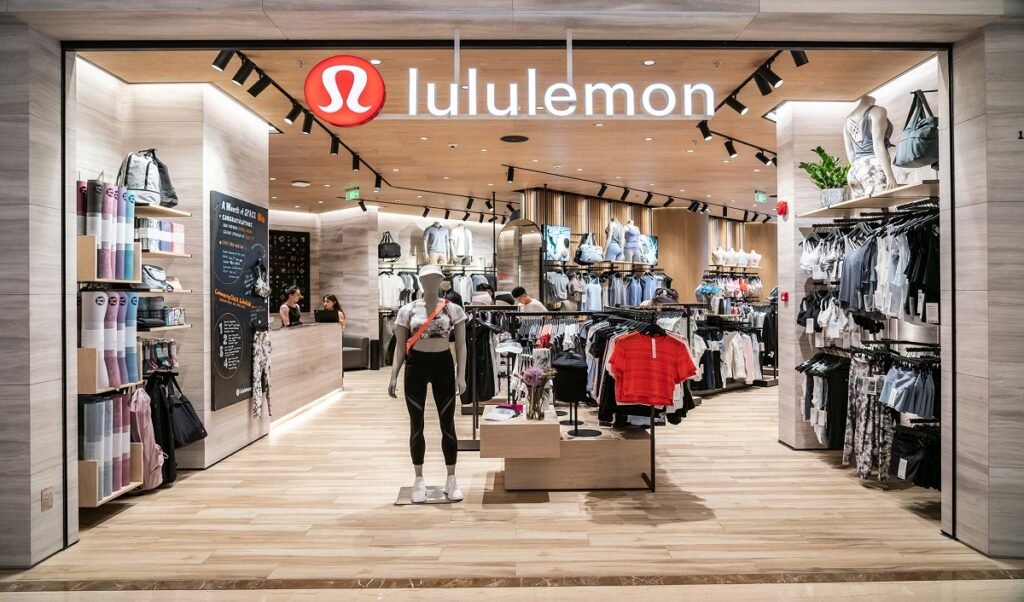Lululemon Athletica is no longer just a name for yoga lovers — it’s a global force in the world of athletic apparel. Known for its sleek leggings, premium materials, and cult-like following, Lululemon has grown from a niche yoga brand into a dominant player in the multi-billion-dollar activewear industry.
In this article, we’ll explore how Lululemon Athletica achieved its success, its strategy, innovation, and what lies ahead for this fitness fashion powerhouse.
A Brief History of Lululemon Athletica
Lululemon Athletica was founded in Vancouver, Canada in 1998 by Chip Wilson. Originally, it was a small design studio by day and a yoga studio by night. From the beginning, the brand focused on creating high-quality, technical apparel for yoga enthusiasts.
The brand opened its first standalone store in 2000. From there, Lululemon expanded rapidly across North America, and later, the world. Today, it has more than 650 stores globally, including in major markets like the U.S., China, and Australia.
What Makes Lululemon Athletica Different?

1. Premium Materials and Technical Design
Lululemon is known for investing heavily in its fabrics. Its signature materials like Luon, Nulu, and Everlux are soft, breathable, moisture-wicking, and built for performance. The brand’s research and development center, “Whitespace,” helps create innovative designs and fabrics that combine fashion and function.
2. Strong Community Focus
Rather than simply selling clothes, Lululemon creates a lifestyle. Many of its stores host yoga classes, running clubs, and fitness events. This community-driven approach keeps customers engaged and loyal.
3. Direct-to-Consumer Model
Unlike many traditional clothing brands that rely heavily on wholesale, Lululemon sells directly to its customers through its own stores and website. This allows the company to maintain control over its brand and maximize profit margins.
4. Effective Branding
From its distinctive logo to its inspiring in-store experience, Lululemon has carefully crafted a brand image that speaks to wellness, positivity, and high performance. Its bags, often printed with motivational quotes, have become as iconic as its leggings.
Lululemon’s Product Strategy
Lululemon started with yoga pants, but its product range has grown significantly:
- Women’s Apparel: Leggings, sports bras, tanks, jackets, and accessories.
- Men’s Apparel: Shorts, joggers, tops, outerwear, and underwear.
- Footwear: Lululemon launched its own line of women’s running shoes in 2022 and plans to expand into men’s shoes.
- Accessories: Yoga mats, water bottles, bags, and more.
Their product development focuses on solving real customer problems, often based on feedback and testing. Items are frequently updated to meet evolving customer preferences.
Lululemon’s Financial Performance
Lululemon has shown consistent growth over the years. In its most recent earnings report, the company revealed:
- 2023 Revenue: Over $9.6 billion.
- Same-Store Sales Growth: Up 13% year over year.
- Digital Sales: Account for over 40% of total revenue.
Its financial strength comes from its loyal customer base, smart expansion strategies, and growing international presence. While the activewear space is competitive, Lululemon continues to thrive thanks to its niche positioning and brand equity.
Expansion Into New Markets
1. Menswear
Menswear is a major focus for future growth. Though Lululemon began as a women-focused brand, the men’s line now contributes significantly to overall revenue. It includes joggers, performance shirts, and versatile pieces for the gym or office.
2. International Growth
While the U.S. and Canada remain key markets, Lululemon is expanding rapidly in Asia and Europe. China is seen as a massive opportunity, and the company is investing heavily in local marketing, store openings, and product adaptation.
3. Digital & Omnichannel Strategy
With an easy-to-navigate website and mobile app, Lululemon offers a seamless shopping experience. It blends online and in-store through services like Buy Online, Pick Up In Store (BOPIS) and virtual shopping appointments.
Lululemon Mirror: Entering the Fitness Tech Space
In 2020, Lululemon acquired Mirror, a home fitness company offering interactive workouts via a smart mirror device. The goal was to strengthen its position in the home fitness market and offer more than just clothing.
However, the venture struggled to meet expectations. In 2023, Lululemon announced plans to wind down Mirror’s operations due to slower-than-expected adoption and a saturated market. Despite this, the move showed Lululemon’s willingness to experiment and innovate.
Challenges Ahead for Lululemon Athletica

Despite its success, Lululemon Athletica faces several challenges:
- Rising Competition: Brands like Nike, Adidas, Gymshark, and Athleta are all competing in the premium activewear space.
- High Price Point: Lululemon’s gear is expensive. While customers see value in the quality, it can be a barrier for price-sensitive shoppers.
- Global Economic Uncertainty: Inflation, currency exchange rates, and supply chain issues continue to impact the retail industry.
- Sustainability Demands: Today’s customers want more eco-conscious choices. While Lululemon is making efforts, it must continue to invest in sustainability to stay competitive.
Sustainability at Lululemon
Lululemon has made sustainability part of its long-term strategy. Here are some key initiatives:
- Goal to use 100% sustainable materials by 2030.
- “Like New” Program: A resale initiative encouraging customers to return gently used items in exchange for store credit.
- Recycling and Waste Reduction: Efforts to reduce packaging and improve supply chain sustainability.
These steps align with growing consumer demand for responsible fashion practices.
Customer Loyalty and Brand Love
Lululemon doesn’t rely on traditional advertising. Instead, it invests in:
- Ambassador Programs: Partnering with fitness instructors, athletes, and wellness coaches.
- Community Events: Free yoga classes, pop-up studios, and in-store gatherings.
- Word of Mouth: Happy customers spread the word, and social media further amplifies it.
This organic growth strategy has built a highly loyal customer base.
What’s Next for Lululemon Athletica?
Looking ahead, Lululemon aims to double its revenue by 2026. Its strategy includes:
- Expanding menswear and international presence.
- Investing in digital innovation.
- Pushing further into footwear and accessories.
- Continuing its sustainability journey.
With strong leadership, an iconic brand, and a clear vision, Lululemon is well-positioned to continue shaping the future of activewear.
Final Thoughts
Lululemon Athletica has gone from a small yoga-focused brand to a global powerhouse in just over two decades. It leads with innovation, connects with its community, and keeps evolving with the market. While the road ahead includes challenges, Lululemon’s ability to adapt and stay relevant gives it a unique edge.
Read Next – Nike Brand: Innovation, Legacy, and Global Impact






